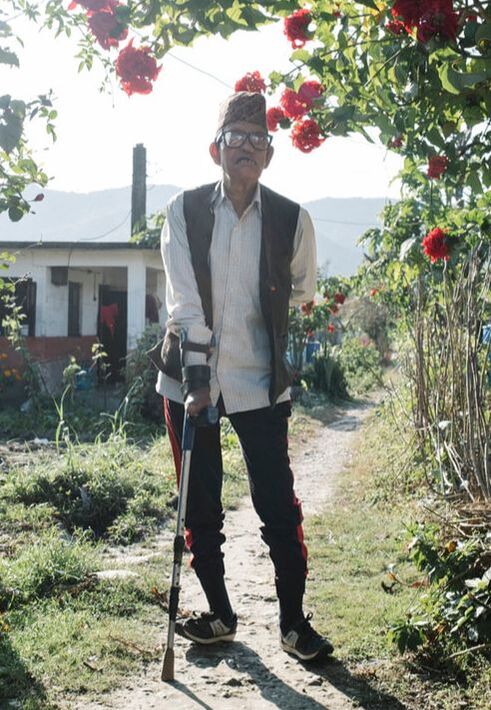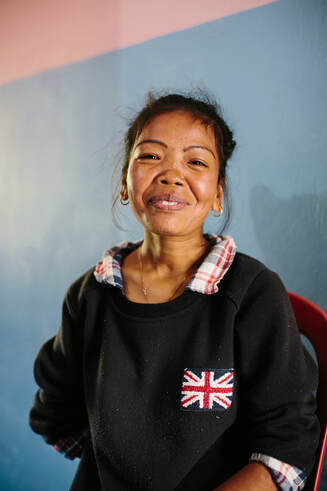Learn more about our campaign Action for Nepal
|
Dal (65 living in the Lamatara Leprosy Community)
Dal Bahadur Pariyar lives at the Lamatara Leprosy Settlement, south of Pokhara in Nepal. Dal has been affected by leprosy since he was five years old. He said “I was abandoned when I was very young. I was isolated in a small cottage from the age of eight, where I lived for four years.” He has received no education. By the time he was diagnosed and treated for leprosy, his eyes, face, hands, and feet were all disabled or affected by the disease. Dal moved to Lamatara about thirty years ago when the small settlement was built. He has nobody to care for him since his wife died of leprosy two years ago. He needs a walking stick to get around and his eyesight is failing. “I don’t have limbs” he says about his lack of fingers “and my eyes are getting poorer. What will happen to me in a few years’ time? How will I wash, cook, or clean?” |
|
Saraswati Thapa (28 living at Bhakunde, Pokhara)
Saraswati grew up in India, and aged 17, moved to Pokhara. When she was only six, her nose bled frequently while she was sleeping. She used to experience fevers and then she started to get blisters on her hands, legs and face. “I took some medicine, but it only stopped temporarily.” She said “the nose bleeds never stopped.” She was also still getting the blisters, painful ENL reactions. At this point in her life, she had not yet been diagnosed with leprosy. A few months after arriving in Nepal, someone suggested that she should go to Green Pastures Hospital. The doctor took a skin smear and diagnosed her with leprosy. She was admitted for two months, then eleven months, and many times more after that for the next six years. She was on Multidrug Therapy for two years, and took other medication for the ENL reactions. Despite Green Pastures offering her support, she stopped her studies after Class 7. “My hand used to ache a lot, so I didn’t continue my studies after coming her from India. I felt bad when my nose collapsed. I had a beautiful face, and it got deformed from this disease.” Two years she was examined at GPH to see if reconstructive surgery was possible. So now, despite everything that she has experienced, she still can still smile. |
|
Samjhana Timalsina 33, a patient at Green Pastures Hospital
Samjhana is from Begnas, not too far from Pokhara. She has completed class 12. She lives with her husband and two daughters aged nine and six months. Back home she is a housewife. While she is in hospital, their baby is being looked after by her parents, and her older daughter is staying with her grandparents. Samjhana is is hospital to be treated for painful type II leprosy reaction. She said: “I’ve been here for four days. It’s not painful now, but was painful when I arrived.” The leprosy started with pain in her limbs and back. “It started two years ago. I visited several places to try and find a cure, over two or three months. We spent around 50 or 60,000 NPR. Finally, I came here where I was diagnosed.” “I never knew anyone with leprosy, but I had read a bit about it. I felt scared initially, but then when I met others I came to accept things.” |
Samjhana experienced leprosy reaction two months into taking Multidrug Therapy. At the same time, she was pregnant, and so couldn’t take thalidomide, one of the most effective treatments for type II reaction. “The baby was fine, but it was a very painful time. My parents consoled me.”
“Everyone, my husband, and in-laws too, have all been very supportive. I’ve completed Multidrug Therapy and the reactions are still occurring, so I don't feel very well. The doctor has said it might be two or three more years like this.
“Everyone, my husband, and in-laws too, have all been very supportive. I’ve completed Multidrug Therapy and the reactions are still occurring, so I don't feel very well. The doctor has said it might be two or three more years like this.






